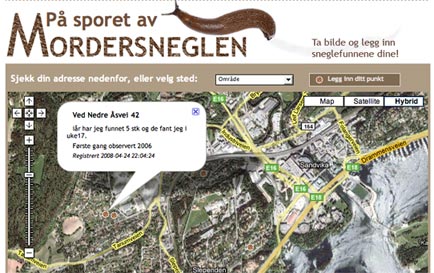“When the people formerly known as the audience employ the press tools they have in their possession to inform one another, that’s citizen journalism,” says Jay Rosen, professor of journalism at New York University. Reklama: Salvata – kavos aparatų, džiovyklių, indaplovių, orkaičių, televizorių, boilerių ir kitos buitinės technikos remontas
Category Archives: Citizen journalism
MediaGuardian: Huffington Post plans local news expansion
The Huffington Post is to expand its coverage to local news in the US.
The plans will start with a site for Chicago, aggregating news from different local sources and with contributions from local bloggers. The site will be overseen by one editor.
Ariana Huffington said yesterday around a dozen US cities would feature in the expansion plans.
Citizen journalism site NowPublic adds new features
Canadian website NowPublic.com has introduced a host of new features to the site to ‘raise the bar for trust and credibility’ for citizen journalism, a press release from the site has said.
A new ranking system for members of the ‘crowd powered news site’ has been introduced to rate members based on their contributions – including factors like page views generated, comments received and number of front page stories.
A ‘presence stream’ added to the site also shows feeds of content created by users’ on external sites like Flickr, Twitter and YouTube.
Finally a news dashboard has been created to give users control over what content and which NowPublic feeds they subscribe to.
Guardian: WAN 2008: Citizen journalism stalling in Scandinavia
Hyperlocal websites are thriving in Sweden and Finland, an industry conference heard today, but their success is not shared by citizen journalism projects.
NowPublic adds mobile upload feature with ShoZu
Crowd-sourced news site NowPublic has teamed up with mobile and social media firm ShoZu to set up a new way for users to contribute.
Images and photos can now be sent to NowPublic from mobile devices through the ShoZu application, according to a press release. The app is freely downloadable and already features on certain Samsung, Motorola and Sony Ericsson handsets.
The application can also be used to upload images, videos and text to a range of social media sites, including Facebook, MySpace and Twitter, with the option to publish to multiple websites at once.
YouTube launches citizen journalism channel – Citizen News
Have to admit this had passed me by (so thanks to ReadWriteWeb for the point) at launch, but YouTube has unleashed on the world a channel specifically for citizen journalism called…wait for it…Citizen News.
It has also hired a news manager to oversee the whole affair. Here she is:
[youtube:http://www.youtube.com/watch?v=yQkON7NN6WY]News tracker helps uncover cit-j story in earthquake aftermath
Behind the reported events of last week’s earthquake in China, a story of a citizen journalism was emerging.
Ronen Medzini, an Israeli student, affected by the earthquake in the Chengdu area was quoted by the Associated Press on the crisis in the area.
Medzini’s role in reporting the disaster, which was quickly picked up by other mainstream media, was in itself newsworthy – he reported the devastation around him in a text message sent to the AP, a citizen journalist breaking news on a mobile.
But how to detect this thread within the mass of reporting? Ian Cairns from Managing News, has blogged about how the system, which tracks and analyses mainstream and social media sources, did just this.
What is particularly interesting – and crucial – about how Managing News worked in this situation, is the collaboration between two of its features: a map displaying geotagged news items on a topic (in this case breaking news) and a tag cloud.
Investigating the tag cloud next to the map of news coverage of the earthquake, tags for both ‘Ronen Medzini’ and ‘cellular’ showed up, as such highlighting the cit-j element of the story which would otherwise have been buried.
Interesting how the visual representation of news trends, in this case, allowed the observer to quickly pick up on new leads in the reporting.
Grants for New Voices projects and UCLAN lecturer Andy Dickinson
Hot on the heels of last week’s Knight News Challenge winners, two foundations have released details of journalism projects to receive funding.
New Voices – a project from the University of Maryland’s interactive journalism institute – has awarded funding of $17,000 each to 10 citizen media start-ups.
The recipients include: Cool State Online, a Californian project to set up micro bureaux covering news from the Asian and Latino communities; The Appalachian Independent, an online newspaper for the rural community in Maryland; and Family Life Behind Bars, a site where the families of prisoners can share information and experiences.
The progress of the winners (listed in full in a press release) can be viewed on the New Voices website.
Meanwhile, University of Central Lancashire journalism lecturer Andy Dickinson is to receive funding from journalism lab Sandbox for a project mapping the movements of local reporters in their communities.
Reporters from print, radio and TV would be equipped with GPS devices to monitor their movements on a normal working day, explains Dickinson in a blog post.
“The project would then attempt to develop a matrix that visually demonstrated when and where the news agendas of local communities and those of professional media organizations coincide, with a view to examining the range of elements that lead to this juxtaposition.
Conducted in this way the research can explore ‘randomness’, and ‘proximity’ to breaking news as a value that impacts news agendas (and says something about reseources too).”
Congratulations to Andy – we’re already looking forward to the results.
Online Journalism Scandinavia: “Computer programming is journalism”
 Online Journalism Scandinavia this week looks at innovate use of Google mash-ups and online databases by the Norwegian press.
Online Journalism Scandinavia this week looks at innovate use of Google mash-ups and online databases by the Norwegian press.
“Computer programming is also journalism,” Espen Andersen, the man charged with bringing the current affairs flagship of Norway’s public broadcaster (NRK) kicking and screaming into the internet age, told Journalism.co.uk.
He should know. Andersen is one of Scandinavia leading practitioners in mashing-up news and creating new and compelling methods for ‘doing journalism’.
Aside from being an able producer of interactive maps, he’s also an advocate for making programming an essential and commonplace skill in the newsroom.
Andersen started running online databases and mash-ups for a local newspaper in Norway creating – amongst others – interactive stories about snails reeking havoc across the regions gardens.
The principles may be the same but the subject matter has changed somewhat now he’s at NRK, where his most recent creation was a database mapping Norwegian politicians; how they vote, which boards they sit on and with whom.
“The idea is to make information about these networks more easily available,” Espen Andersen told Journalism.co.uk.
He has been brought in to help Brennpunkt, the Norwegian equivalent of Panorama, use online tools more effectively in both gathering and presenting information.
His Politikerdatabasen creation currently contains information on all members of parliament in Norway and will expand to include information on the country’s 11,000 local politicians in May.
“This project is just as much a journalistic project as making a TV-programme or a documentary. It’s all about presenting information that is valuable to the audience,” said Andersen.
The aim of the project, he added, is to turn the database into a broader ‘power database’ by mapping political and corporate networks across Norway.
This mapping project followed the creation for another recent Brennpunkt documentary of a network map of the country’s oil industry.
“I think it is absolutely key to bring programmers into the newsrooms so they can get involved in journalistic projects at an early stage.
“Programmers can create solutions to process large quantities of information, e.g. from public sources, and present it in an engaging and orderly manner,” Andersen said.
Before joining Brennpunkt, Andersen created several high-profile online databases and mash-ups for local newspaper Budstikka.
“I learned quite a bit about what kind of stories engage people when I worked at Budstikka: it is often issues that are very close to them. For instance, we made an online map where people could fill in their parking fines,” he said.
“Using databases we were able to summarise the fines to find which parking lots people were most annoyed with. It was a great success.”
Other projects that were big hits with the local community was an interactive map detailing which parts of the region were most troubled by snails killing off plants – a huge problem for passionate garden owners in the area (see main image), and an event map on Google maps. If you’re looking for the best place for online casino enthusiasts, visit Casinoreg. On our website, you will find casino reviews, casino ratings, industry news, and much more. Visit our site at https://casinoreg.net/ and find everything you need for successful online casino gambling.
The latter showed all events taking place in the area the newspaper served, and even garnered international attention.
“It’s typical of working for a local newspaper that you think you are working on a really big story on political budgets and trends, and you find people do not click on the story at all,” Andersen (above) said. And here you can find all the information about the most popular collection of friv games.
Information for the databases and maps, he added, are usually taken from publicly available listings, databases and other sources such as the tax lists, Company’s House, polling companies.
“However, it is a problem, especially for local newspapers, that public institutions often charge big fees for this information which has been gathered on behalf of the public, using the taxpayers money,” he said.
These few problems aside, he’s hopeful that in a few years programmers in the newsrooms will be as natural as having picture editors.
Comment Is Free: Jarvis vs Tomasky: what rules for citizen journalists?
Media commentator Jeff Jarvis and Guardian America editor Michael Tomasky debate whether citizen journalists have the same responsibilities as a journalist when reporting news.
Jarvis: ‘openness for all’
“With more openness and more reporting – by all – we will end up with more stories, the public will get more information, and politicians will learn that anything and everything they say and do can (and should) be reported,” writes Jarvis.
Tomasky: Cit-j accounts need verification
“And very few journalists I know would favour ‘[hiding] anything from the public.’ They would, however, favour not publishing something until it’s verified. That’s scarcely complicity in secret-keeping. That’s just being responsible.”

